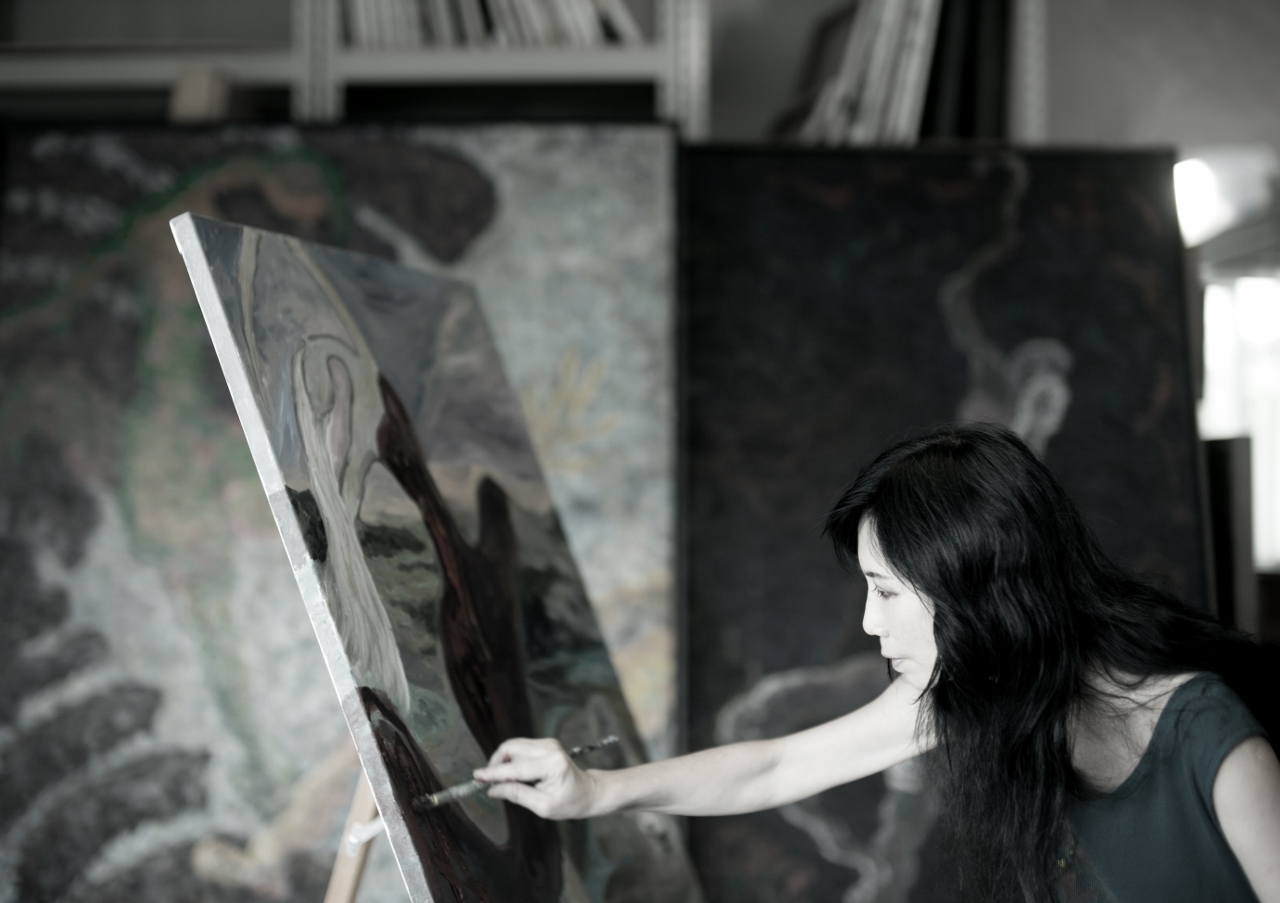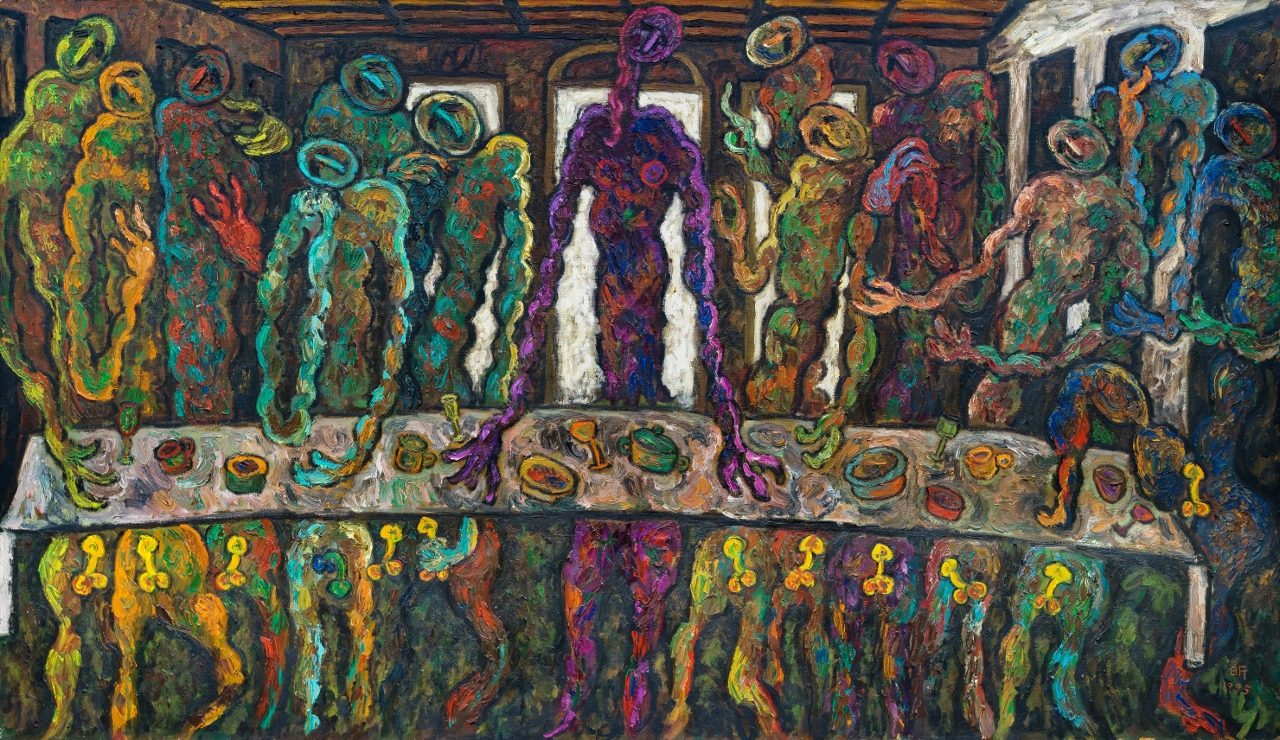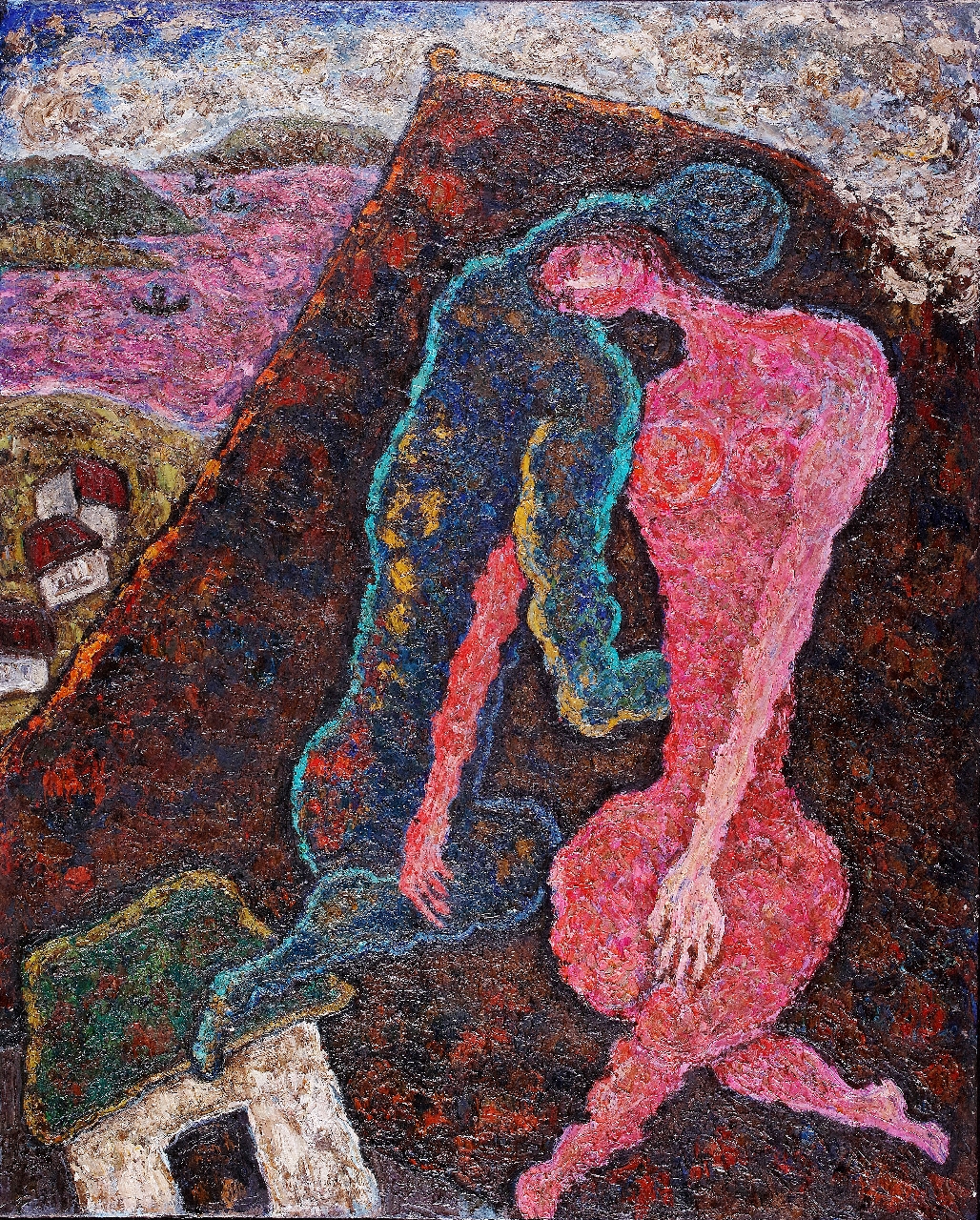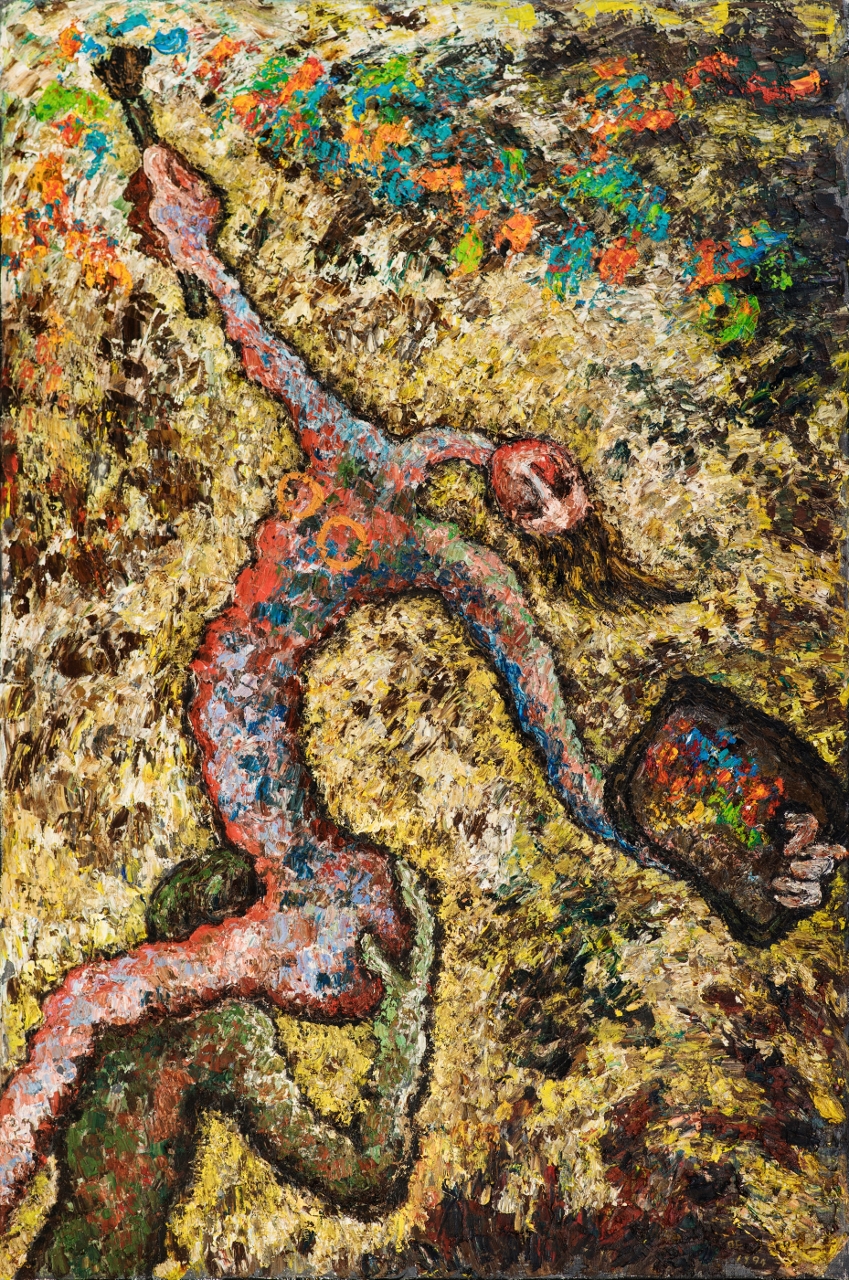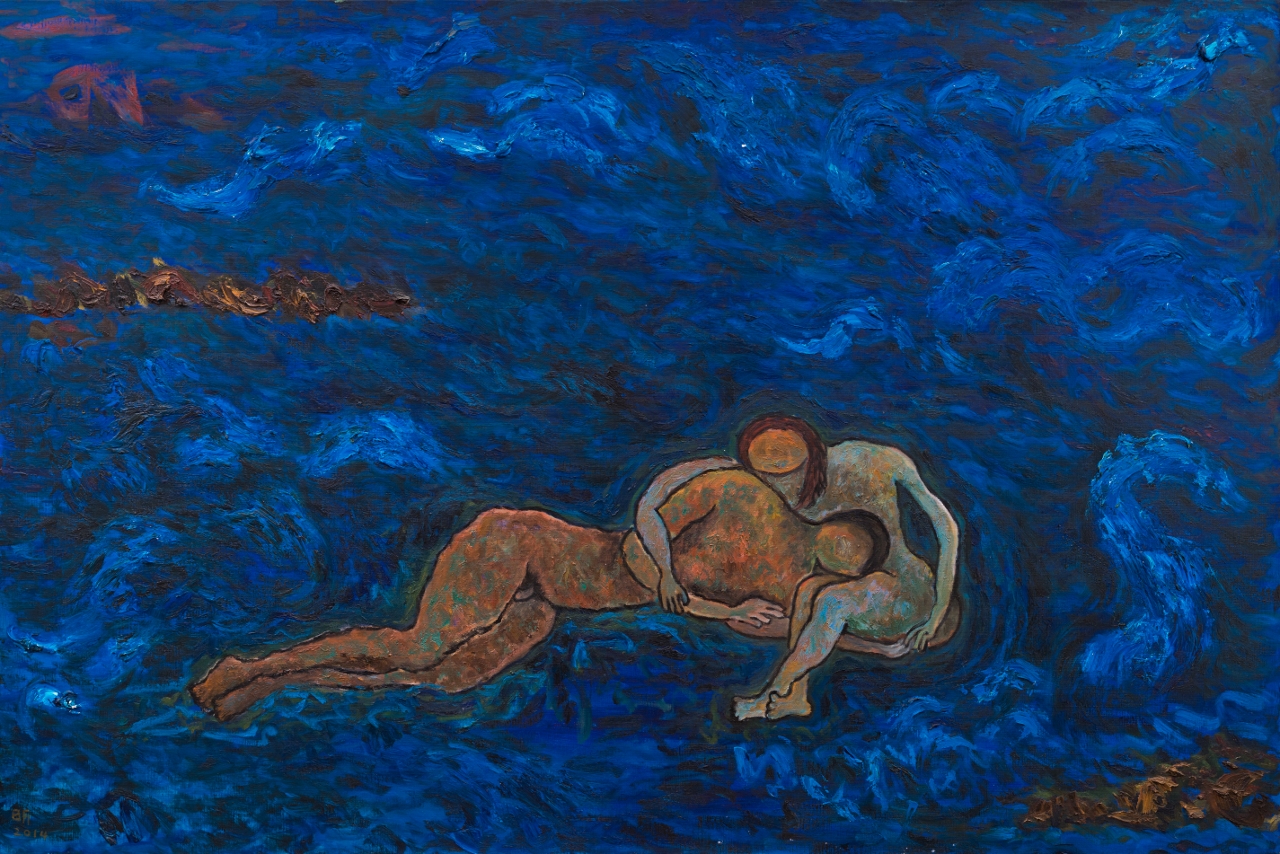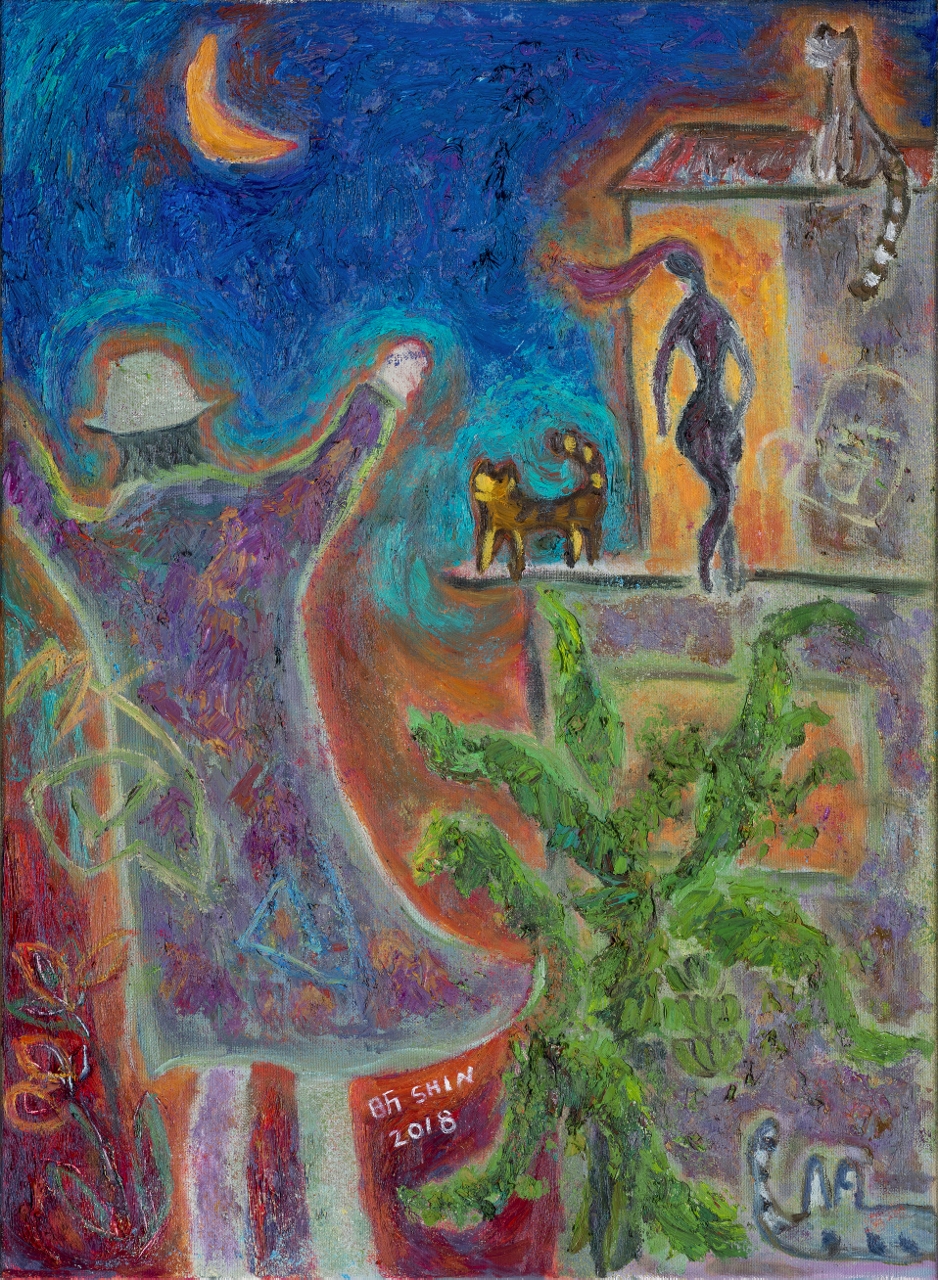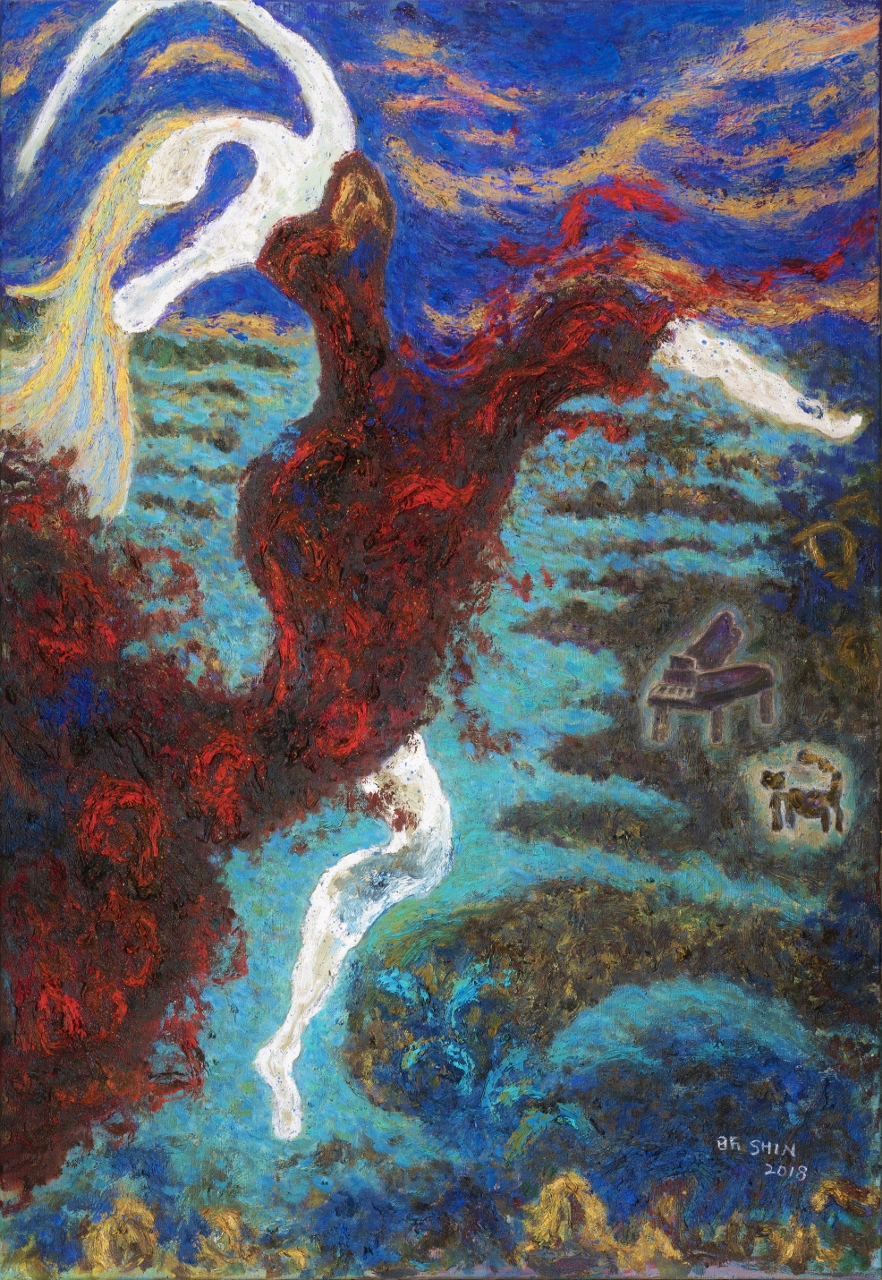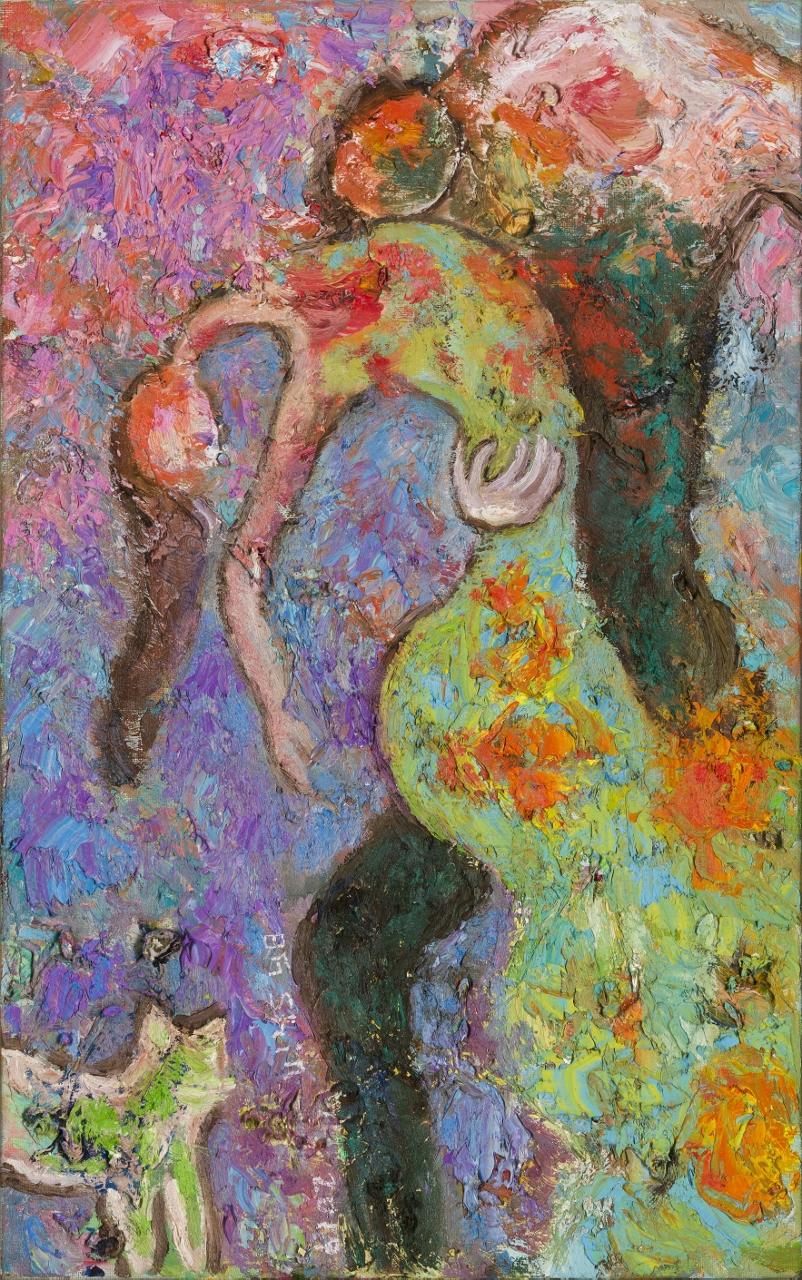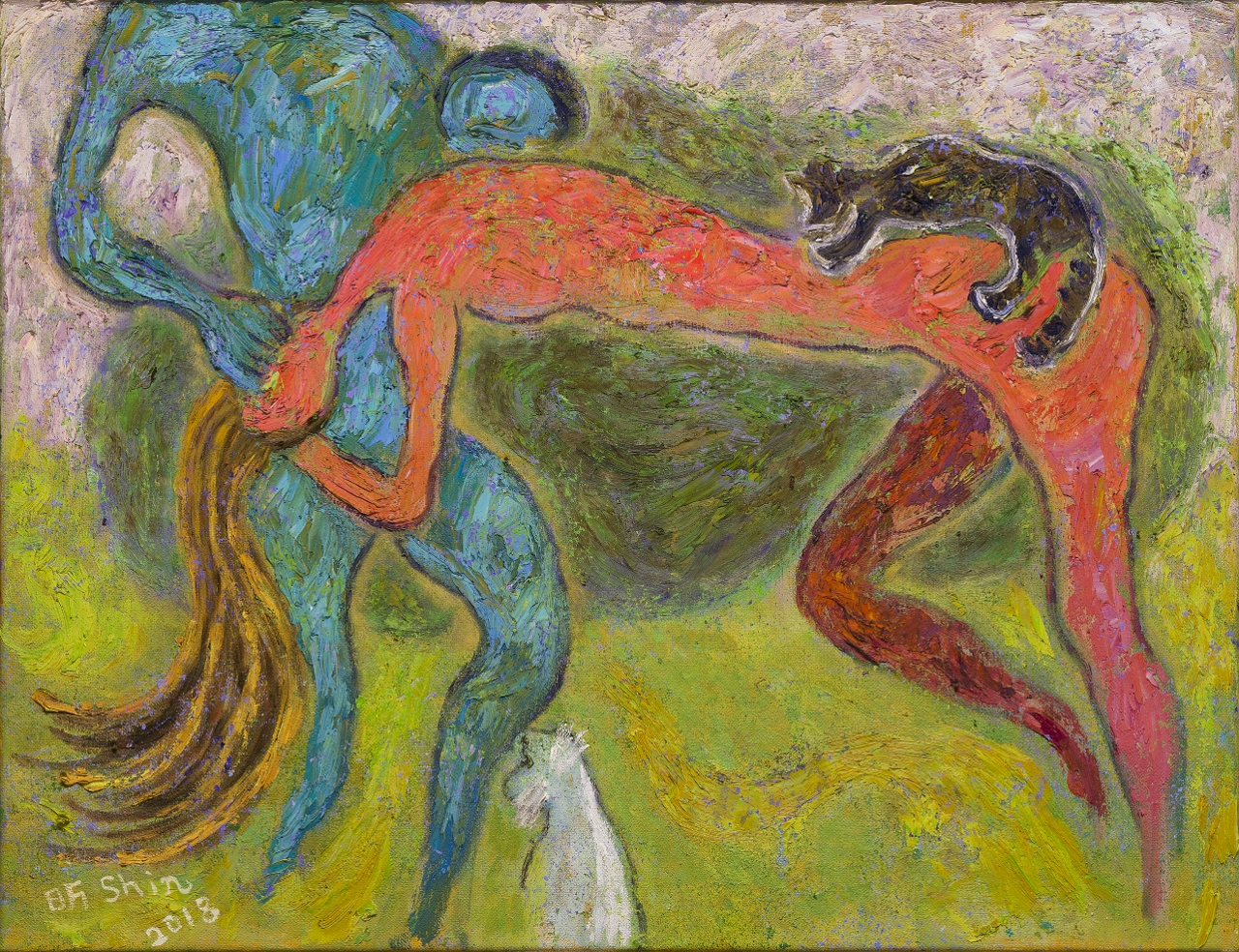Interview with Lee Shin
Lee Shin was a dentist and had a dentist certificate in California. In order to pursue her dreams, she started and a Flamenco dance company MiFuego in 1995, which was the first of its kind in Taiwan. As the pioneer, she introduced the art and culture of Flamenco to the citizens of Taiwan, and Flamenco dance became widely accepted throughout the country.
Through the years, her paintings have been the reflection of her life and passion, covering topics of love, desire, the beauty of men, gender and its power dynamics, solitude, sadness, desperation, and sometimes just of her clowder of cats.
She has participated, both domestically and internationally, in diverse individual and collective expositions, in cities such as Taipei, Fukuoka, Busan, Hong Kong, Shanghai, New York, and Venice. She is also an active artist at Tai Hwa Pottery, where she designs and paints various potteries.
Could you please introduce yourself and tell us how you started in the arts? and your first experience in art making?
I come from a humble and strictly conservative family in Taiwan. My father was a traditional-thinking man working for the Nationalist Party, and my mother was an elementary school teacher. In order to fulfill the expectations of my parents, I attended the Taipei Medical University and became a dentist. When I was pursuing my medical profession, Feminism started trending, and I started my career as a painter to create paintings that reflects the self-revelation of women. They are my interpretation of women’s defiance to the stale and restricting positions of a women’s role in conventional societies, families, and marriages.
The path that I’ve taken in throughout the years was no short of hard choices, and there was the temptation to pursue beauty in different shapes and forms. Eventually, I’ve put an end to my medical career in order to represent myself not only with my painting but also with the elastic exquisiteness of Flamenco choreography. A Flamenco performance could be proud and triumphant, it could be sad and sorrowful, and it could be as entertaining like Georges Bizet’s Carmen, where beauty could be appreciated by both the common and the skeptics.
With the flowing movements of the dances, and the limitless possibilities of paintings, it is essentially a discussion, but without words, on how women could transcend the boundaries of conventional expectations, and the set of rules set by men.
How would you describe yourself and your artwork?
My painting is neither realistic nor abstract. My intention is to embody the flowing strokes in the concrete images, while the strokes wish desperately to break out of the grids. The viewers can apprehend a kind of limits, or constraints permanently though elusively existent, which fall upon a woman like me, sensitive and reflexive. My paintings are more than dancing-like but, rather, torrents of subconsciousness.
Where do you get your inspiration from?
I have always been a sentimental person full of emotions and when I create a painting, I paint for no other person or purposes other than fulfilling my desire to reflect my feelings. My paintings have always been true to my life, an honest reflection to my passion, and these paintings have been infused with the vitality by the fervent relation between man and woman, cats, dancing and the sea.
What emotions do you hope the viewers experience when looking at your art?
A work upon being finished, it leaves its creator just like a baby leaves the mother’s womb. It begins to develop its own life thanks to the supplies of its surroundings. The nutrients of the surroundings are comprised of the viewer’s vision, and the viewer’s own life experience. The viewer builds up a kind of consonance with the work in view of his/her own life experience, and that leads to the diversified representations of the same work.
When do you know that an artwork is finished ?
I normally would place a painting in the studio for nearly one year after it’s completed. And during this one year I would take it out and repeatedly examine it and think about it, and when it doesn’t occur to me that any changes should be made, it’s done. Exceptions happened sometimes. I would know “that’s it” upon completing a painting. On the other hand, for some works I think they need some fine tunings after a long while.
What has been the most exciting moment in your art career so far?
In the month of October of 2017, I held a solo exhibition, “Torso, a Dance Forged by Time,” comprised of multimedia dance theater, juxtaposing dancing and paintings, and through it, I declared my ideas of love, death, time and beauty. And also, It is also a review and Reflection of my life.
How long does it take to produce one work?
It depends. My paintings are made by layers upon layers of strokes. I use painting knives and brushes at the same time, and many other skills. My techniques are still developing. I think it takes more time to be sophisticated.
What exciting projects are you working on right now? Can you share some of the future plans for your artworks?
I hope my artworks can be free from the limits of oil painting, and incorporate many different materials, including video art, and why not, even my own performance art. I hope my future artworks can be multifaceted artistic presentation.
Do you have any upcoming events or exhibitions we should know about?
I will participate in the 2019 edition of Taipei Art. This art exhibition is the biggest one in Taiwan, and held a long history with highest standards.
Next year I will hold a solo exhibition in the art gallery at National Chiang Kay-Shek Memorial Hall.
And maybe a second appearance at New York Art Expo.
Where do you see your art going in five years?
I hope my art can be exhibited all over the world, and have more conversation with different cultures in the world.
Website:
https://issuu.com/leeshinsolea/docs/2017_lee_shin_df9a9b7568796b
FB:
https://www.facebook.com/profile.php?id=100000872769694
Instagram:


